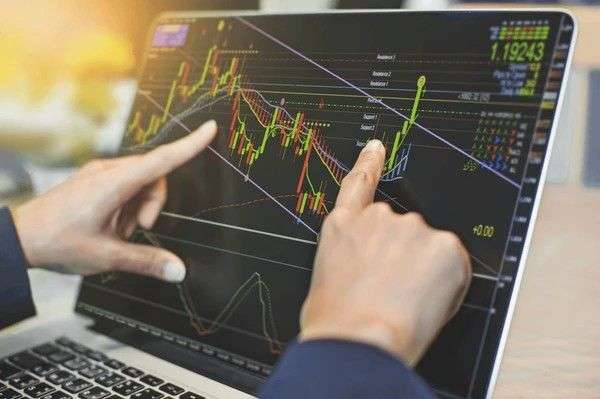In the rapidly evolving world of finance, artificial intelligence (AI) has emerged as a transformative force. As an investor, I’ve found that AI is no longer just a buzzword but a tangible tool reshaping how we approach the stock market. Whether it’s predicting stock trends, automating trades, or analyzing massive amounts of data in real time, AI offers a multitude of ways to enhance decision-making. In this article, I’ll take you through my experience of integrating AI into stock market investing and explain how it has changed the landscape of finance.
Table of Contents
What is AI in the Stock Market?
Artificial intelligence in the stock market refers to the use of machine learning algorithms, data analysis, and predictive modeling to assist in making investment decisions. Traditionally, human traders have relied on intuition, experience, and historical data to make investment choices. With AI, this process is not only faster but also more data-driven. The AI systems can analyze large datasets that would take humans an overwhelming amount of time to process, uncovering patterns and insights that might go unnoticed.
As AI continues to advance, its role in the stock market expands. It can now track a vast array of information, from price movements and financial reports to social media sentiment and global events. By leveraging these data points, AI algorithms can generate predictions about stock movements and help automate trading strategies.
The Role of AI in Stock Market Predictions
In the world of stock trading, one of the key challenges has always been predicting market movements. Human investors and traders often rely on technical analysis, which involves studying past price movements and trading volumes, and fundamental analysis, which looks at a company’s financial health. AI, however, has the ability to combine both methods in real time, using vast amounts of data to predict stock price movements with impressive accuracy.
Take the example of a machine learning model designed to predict stock prices. This model would analyze historical data of a particular stock—its price history, earnings reports, market conditions, and even social media sentiment. The AI can identify patterns that are not immediately obvious to human analysts. For example, a sudden surge in positive sentiment on social media might predict an upward price movement in the stock, which could be a sign for me to buy, or if the sentiment turns negative, it might prompt me to sell.
The Mechanics of AI Trading Systems
AI trading systems use algorithms to analyze market data and execute trades without human intervention. These systems are often based on deep learning, a subset of machine learning, which allows the AI to improve its predictions over time. The more data the system is exposed to, the better it becomes at identifying market patterns and trends.
There are different types of AI trading systems, ranging from simple rule-based systems to more complex ones that use neural networks. For example, a basic AI trading system might use a set of predefined rules to make trades based on specific conditions, such as a stock’s moving average crossing above or below a certain threshold. On the other hand, more advanced AI systems use neural networks, which mimic the way the human brain works, to process information and adapt to new patterns.
One of the key advantages of AI trading is speed. AI systems can analyze and react to market data in real time, executing trades in milliseconds. This is especially useful in high-frequency trading (HFT), where speed is essential for making profits. For instance, if I’m using an AI system for HFT, the algorithm might spot a small price discrepancy between two stocks and execute a trade within microseconds, potentially making a profit before the market has a chance to adjust.
Pros and Cons of Using AI in Stock Market Investing
Like any tool, AI has its advantages and drawbacks. From my perspective, the biggest benefits come from the ability of AI to process vast amounts of data quickly and accurately, minimizing human error and improving decision-making.
Pros:
- Speed and Efficiency: AI can analyze large datasets and execute trades much faster than a human trader. This can be especially useful in volatile markets where timing is crucial.
- Data-Driven Decisions: AI systems make decisions based on data rather than emotion. This reduces the risk of impulsive decisions driven by fear or greed.
- 24/7 Operation: AI systems can work around the clock, monitoring markets even when I’m not available to trade. This can be particularly useful in global markets where trading hours differ.
- Risk Management: AI can also be used to manage risk more effectively. By continuously monitoring portfolio performance and market conditions, AI can make adjustments in real time, helping to reduce losses.
Cons:
- Overfitting: One of the risks I’ve encountered with AI trading systems is overfitting. This happens when an algorithm becomes too tailored to historical data and fails to adapt to new market conditions.
- Lack of Human Intuition: While AI is good at analyzing data, it lacks the intuition and creativity of human investors. For example, AI might not fully account for geopolitical events or changes in market sentiment that can affect stock prices.
- High Costs: Developing and maintaining advanced AI trading systems can be expensive. Smaller investors might find it difficult to compete with institutional investors who have access to the best AI tools.
- Dependency on Data Quality: AI is only as good as the data it’s given. If the data is flawed or incomplete, the predictions made by the AI can be inaccurate, leading to poor investment decisions.
Comparison of AI Trading vs. Human Trading
While AI has proven to be an effective tool in stock market investing, it is still important to consider the traditional methods of human trading. Here, I’ve put together a simple comparison between AI trading and human trading to help illustrate the differences:
| Factor | AI Trading | Human Trading |
|---|---|---|
| Speed | Instant, capable of executing trades in milliseconds | Slower, dependent on individual’s availability |
| Data Processing | Can process vast amounts of data in real-time | Limited by human capacity for data analysis |
| Emotion | No emotional influence, purely data-driven | Can be influenced by emotions (fear, greed) |
| Adaptability | Adapts through machine learning over time | Adaptable based on experience and intuition |
| Cost | High initial setup and maintenance costs | Lower initial costs, but may require more time and effort |
| Risk Management | Continuously monitors risk in real-time | Risk management based on personal judgment |
The Future of AI in the Stock Market
Looking ahead, I believe AI will continue to evolve and play an even more significant role in the stock market. As AI systems become more sophisticated, they will be able to analyze even more data types, such as real-time news, satellite imagery, and social media posts. This will make it easier for investors like myself to track market trends and make better-informed decisions.
AI will also likely become more integrated with blockchain technology, enabling faster, more secure transactions. For example, AI could be used to verify the legitimacy of trades and ensure that they meet compliance requirements, further streamlining the investment process.
In addition, as AI becomes more accessible, I foresee that retail investors will be able to use advanced AI tools to level the playing field with institutional investors. While the initial costs may still be high, I expect that over time, more affordable AI-driven trading platforms will emerge, making it easier for individual investors to use AI in their investment strategies.
Conclusion
Incorporating AI into stock market investing has changed the way I approach the market. From better predictions and faster execution to data-driven decisions, AI offers a range of benefits that can help improve investment strategies. However, it’s essential to understand the limitations of AI and to use it in conjunction with human judgment. The future of AI in investing looks promising, and I’m excited to see how it continues to evolve, offering new opportunities for investors of all kinds.





